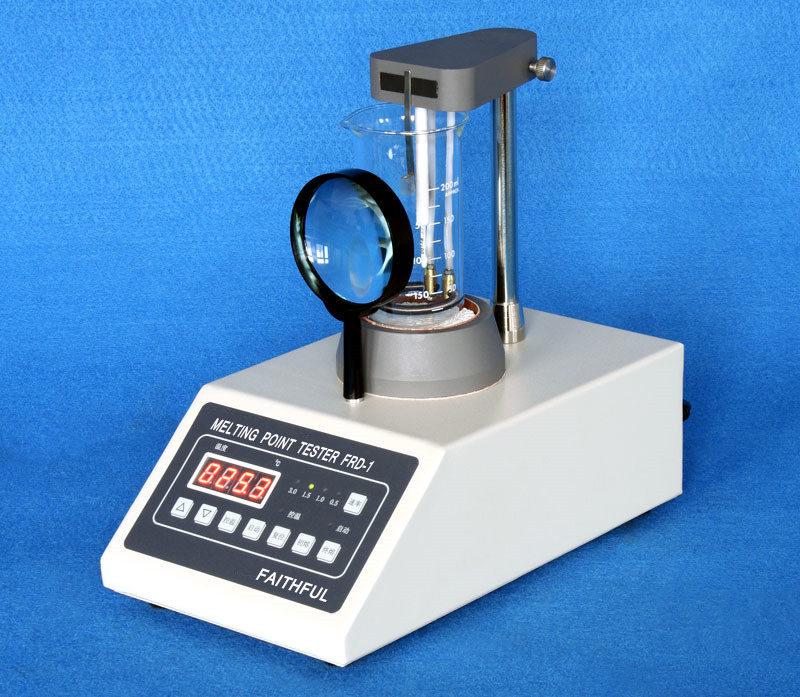


The system was specifically designed to meet the low concentration and sample volume requirements typically associated with pharmaceutical and biomolecular applications, along with the high concentration requirements for colloidal applications.
MELTING POINT MEASURE SOFTWARE
The Zetasizer Nano ZS from Malvern Panalytical is the first commercial instrument to include the hardware and software for combined dynamic, static, and electrophoretic light scattering measurements, giving the researcher a wide range of sample properties, including the size, molecular weight, and zeta potential. The Malvern Panalytical Zetasizer Nano System
MELTING POINT MEASURE SERIES
Melting point traces and TM values for a series of proteins in PBS. The automated measurements were collected with a Zetasizer Nano ZS, using a 1☌ incremental temperature ramp and a 3 minute equilibrium time at each measurement temperature.įigure 3. Figure 3 shows the melting point traces for a series of proteins in PBS. Melting point measurements then are an important step in the total characterization of the target protein, particularly if the protein is destined for integration into a pharmaceutical product or formulation. glycosylation, can also have a marked influence on the stability of the protein structure and hence the melting temperature. pH and salt concentration, and post translational modifications, e.g. Factors Affecting the Melting Point of Proteinsīecause of the unique primary sequence of amino acids associated with specific protein types, melting points can differ significantly. Melting point trace and hysteresis for Ovalbumin in PBS. At 71☌ and higher, both the size and scattering intensity increase exponentially with temperature, indicating the presence of denatured aggregates.įigure 2. At temperatures less than 71☌, the size and scattering intensity are constant, suggesting a stable tertiary structure. Consider Figure 2 for example, which shows the temperature dependent Z-Average diameter and scattering intensity for Ovalbumin in phosphate buffered saline (PBS) measured with a Zetasizer Nano ZS. The change in size that accompanies the protein denaturation is easily identified using DLS techniques. The protein melting point (TM) is defined as the temperature at which the protein denatures. The sensitivity of DLS is sufficient to distinguish different oligomeric and quaternary protein states, and is ideally suited for monitoring the stability of the protein structure to denaturing conditions. In DLS, the Brownian motion of the particles is measured, and the hydrodynamic size is calculated using the Stokes-Einstein equation. Dynamic Light Scattering for Characterization of Proteinsĭynamic light scattering (DLS) has long been used as a protein characterization tool. Schematic detailing the protein denaturation process and the subsequent change in hydrodynamic size indicated by the diameter of the solid circle. A representation of the denaturation process, along with the subsequent change in size is shown in Figure 1.įigure 1. In the absence of chaotropic (aggregation prohibiting) agents, inter-polymer hydrophobic interactions can quickly lead to non-specific aggregation of the denatured polypeptide chains. When denaturation occurs, the small size of the protein is increased to a value consistent with a random coil polymer of the same molecular weight. through a change in the pH or temperature, entropically driven denaturation or unfolding can quickly occur. If solution conditions are outside of this range, e.g. As such, the interactions stabilizing the protein structure are just sufficient to maintain the structure within a narrow range of environmental conditions. This functionality necessitates a large degree of flexibility within the structure of the protein. Proteins were evolved to perform specific functions within biological systems, such as catalyzing reactions and transporting small molecules or ions. These structures are stabilized by a combination of electrostatic and hydrophobic interactions, along with the formation of multiple hydrogen bonds between the side chains of the amino acids within the structure. In contrast to manmade and random coil biological polymers, the protein's polypeptide chains are folded into unique 3-dimensional structures in the natured state. Proteins are composed of polypeptide chains, synthesized within the cell from a pool of 20 different amino acid types. \( \newcommand\) every 30 seconds (i.e., very slowly).Sponsored by Malvern Panalytical May 9 2005


 0 kommentar(er)
0 kommentar(er)
